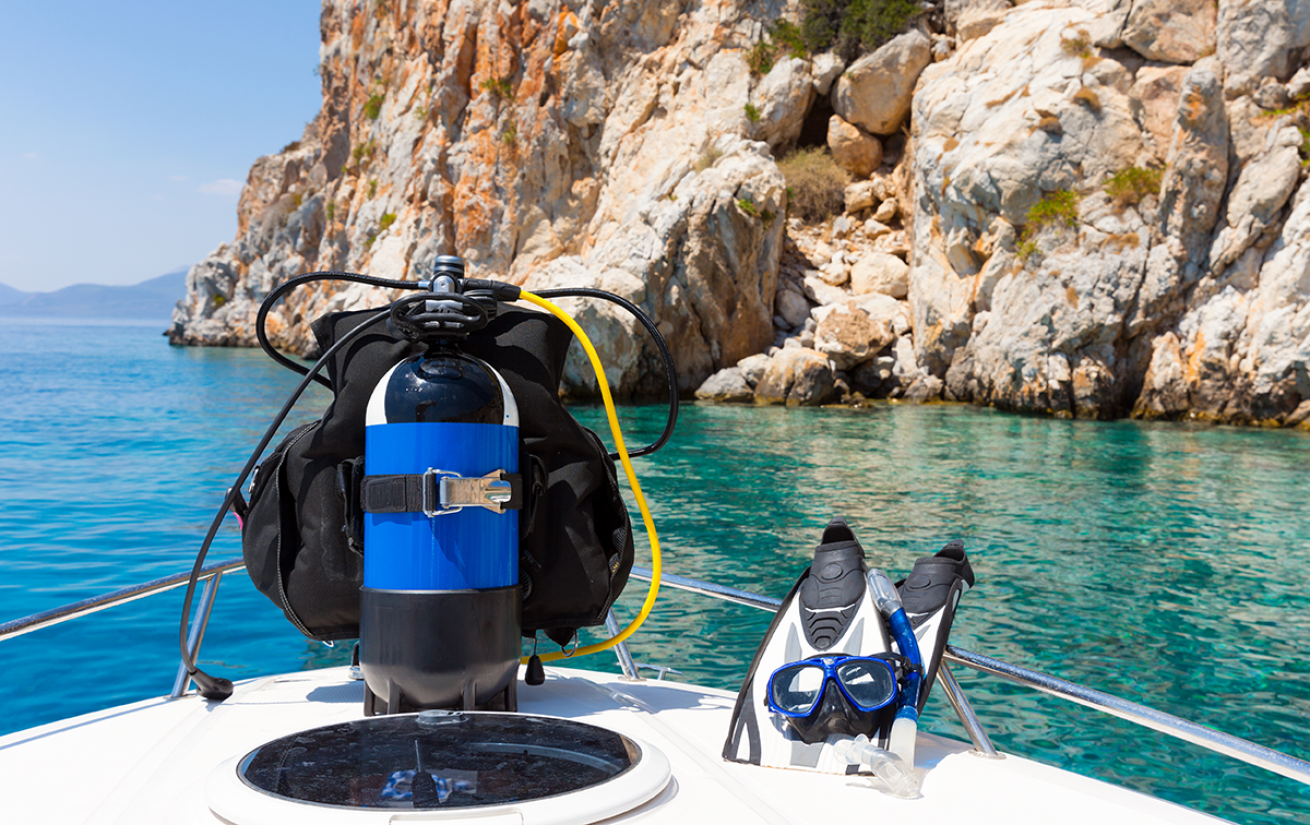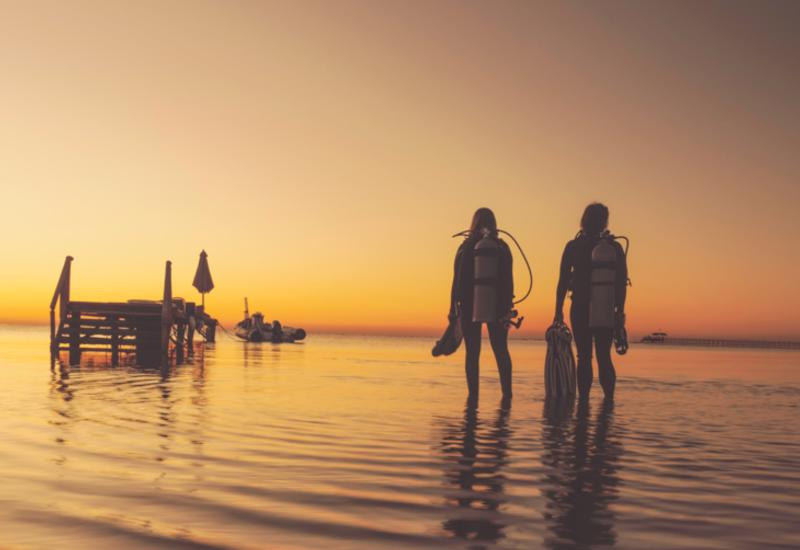Five Great Greek Islands for Scuba Diving
With 10,000 miles of coastline in Greece, divers are spoilt for choice. This Mediterranean archipelago is home to around 3,000 islands with stunning dive sites located throughout its waters. While some countries may have a reputation for one specific type of diving, Greece offers a little of everything.
From caves and caverns to shipwrecks to spectacular wall diving, easy-to-access shore dives and unique topography, the most challenging part of diving in the Greek islands is deciding where to go. Once you've made your decision, you'll be treated to turtles, dolphins and seals as well as incredible macro life and vibrant corals. If you're heading to Greece and aren't sure where to head first, read on for some of the top spots.
Best Island for Wreck Diving: Mykonos
Lively Mykonos is a haven for wreck diving, with multiple wrecks dotted around just off the island’s coast, accessible for divers of all levels.
The Anna II is one of the most popular: a pristine wreck just past 80 feet surrounded by colorful reefs and sea sponges. It's possible to swim through part of it, and its location on the southeast coast attracts a huge diversity of marine life.
More experienced divers can head to the northeastern side of the island to find the Peloponisos, a sunken cargo ship from the 1930s that has been cut into two pieces. Conditions can be a little more varied here with choppy water and reduced visibility but it's an adventurous dive that everyone should try once.
Best Island for Shore Diving: Crete
Crete isn't just one of the best Greek islands for beginner divers but also for easily accessible diving, thanks to many no-boat-necessary dive sites. Most diving in Crete takes place just north of the island around Chania. Here, you'll find light-filled stalagmites and stalactites at El Greco Cave and dolphins, stingrays, groupers and octopuses at Mononaftis.
Experienced divers can check out the magic that is Shrimps Cave, where, as the name suggests, you'll enter a cave filled with thousands of shrimp. Or, take a trip to the south of the island for amazing rock formations and colorful corals at Kalypso Bay.
If you have an interest in cave diving and with access to a boat, don’t skip the famous Elephant's Cave, a fascinating, semi-filled cave with fossilized remains of an extinct elephant and a few other animals.

Shutterstock.com/Sven HanscheScuba gear rests on a boat anchored in the Mediterranean.
Best Island for Spotting Bigger Creatures: Zakynthos
It's almost impossible to dive around Zakynthos without spotting the caretta-caretta sea turtle, as the island is home to a breeding ground at the National Marine Park in Laganas Bay. You're also practically guaranteed sightings of octopuses and barracudas, particularly around Keri Peninsula and its caves as well as at the Arc of Triumph site.
If you're visiting Greece during the cooler season you might even be treated to a surprise visit from the Mediterranean monk seals that often pop up around the Marathia dive site.
Big Blue's large pinnacles are a haven for reef life, while Marathia's shallow end is often filled with bream and parrotfish. One of the best things about diving in Zakynthos is its variety: there are sites for divers of all levels and interests.
Best island for Cave Diving: Corfu
Corfu has an almost endless number of caves to explore with varying depths. Known for its excellent visibility and underwater mazes of swim-throughs, crevices and huge boulders, Corfu is unlike anywhere else in the world. Monastery is one of the most famous sites, accessible from nine feet and a popular spot for octopus, shrimp, blue comber and crayfish.
The Hole of Ha, an easy cavern dive inside a mountain, is a beautiful colorful spot where the sun shines through the water from its open top. Neptune’s Hole is one for the explorers, several chambers connected together that are perfect for slow investigation.
Odysseus’s Cave with its soft corals is a top spot for advanced divers, starting at nearly 100 feet and gradually heading up to 72 feet. Deep divers and underwater photographers will love the lesser-visited 131-foot Colovri Cave, with narrow passages and hundreds of shrimp.
Best Island for a Little of Everything: Santorini
Santorini's unique topography makes it a must-visit for divers looking for something a little different. Here, inside the caldera, you'll find sea caves and shipwrecks, wall dives, lava formations and maze-like structures covered in colorful corals.
Visibility is almost always excellent, and the easygoing conditions make Santorini one of the best islands for beginners.
Nea Kameni is one of the most famed areas for diving, home to the shallow Santa Maria wreck, which sits at about 60 feet. Towards the south of the island, you'll likely come across glassfish, octopuses and moray eels while House Reef comes alive after sunset with invertebrates like nudibranchs and crabs. Even further south you'll find Vlychada beach, an artificial underwater park complete with statues. Dive at Thirassia to spot dolphins, swordfish, tuna and groupers.
Need to Know
When to Go: The best time of year for diving in Greece is April to October, when the water is at its clearest and warmest. Expect temperatures between 22 and 26°C.
How to Get There: Most of Greece's larger islands have airports. If you're flying to the mainland, arranging ferries or domestic flights from Athens is easy.











